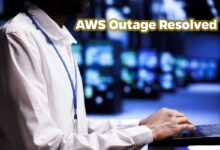AWS Status: 7 Critical Insights You Must Know Now
Ever wondered what’s really happening behind the scenes when AWS seems slow or unreachable? You’re not alone. Monitoring the aws status is crucial for businesses relying on cloud infrastructure. Let’s dive into everything you need to know to stay ahead of outages and performance hiccups.
What Is AWS Status and Why It Matters

The term aws status refers to the real-time health and operational performance of Amazon Web Services’ global infrastructure. Since AWS powers a massive portion of the internet—from startups to Fortune 500 companies—any disruption can ripple across countless applications, websites, and services.
Understanding AWS Service Health
AWS provides a public-facing dashboard known as the AWS Service Health Dashboard, where users can monitor the real-time status of all AWS services. This includes regions like US East (N. Virginia), EU (Ireland), and Asia Pacific (Tokyo).
- Each service (e.g., EC2, S3, Lambda) has its own status indicator.
- Green means operational, yellow indicates issues, and red signals outages.
- Updates are posted in near real-time during incidents.
How AWS Defines Service Incidents
According to AWS, an incident is any unplanned interruption or degradation in service. These are categorized by severity:
- Severity 1 (Critical): Complete service outage affecting core functionality.
- Severity 2 (High): Major degradation impacting key features.
- Severity 3 (Medium): Minor issues with limited impact.
- Severity 4 (Low): Informational notices, no user impact.
“We proactively monitor our systems and communicate service events as quickly as possible.” — AWS Support Team
How to Check AWS Status in Real Time
Knowing how to access and interpret the aws status dashboard is essential for DevOps teams, system administrators, and cloud architects. Real-time monitoring helps mitigate downtime risks and enables faster response times.
Using the AWS Service Health Dashboard
The primary tool for checking aws status is the official AWS Service Health Dashboard. It displays the current state of all AWS services across all regions.
- Navigate to the dashboard and select your region.
- Look for color-coded indicators next to each service.
- Click on any service to view detailed incident reports, including start time, impact, and resolution updates.
Setting Up AWS Status Alerts
You don’t have to manually check the dashboard. AWS allows integration with Amazon CloudWatch and AWS Health Events to send automated alerts.
- Create CloudWatch alarms based on AWS Health events.
- Use SNS (Simple Notification Service) to receive email or SMS notifications.
- Integrate with third-party tools like Datadog, PagerDuty, or Opsgenie for advanced alerting workflows.
Common Causes of AWS Service Disruptions
Even with AWS’s robust infrastructure, disruptions happen. Understanding the root causes behind aws status alerts helps organizations prepare better incident response plans.
Network and Connectivity Issues
One of the most frequent causes of service degradation is network congestion or routing problems within AWS’s global backbone.
- BGP (Border Gateway Protocol) misconfigurations can cause regional latency spikes.
- DDoS attacks on AWS infrastructure can trigger throttling or failover mechanisms.
- Cross-AZ (Availability Zone) traffic bottlenecks may affect internal communication.
Hardware Failures and Data Center Outages
Despite redundancy, physical hardware failures can lead to localized outages.
- Server node crashes in an EC2 cluster can impact running instances.
- Power failures in a data center may trigger automatic failovers.
- Cooling system malfunctions can force shutdowns to prevent hardware damage.
Historical AWS Outages and Their Impact
Looking back at major aws status incidents reveals patterns and lessons learned. Some outages have had far-reaching consequences across the digital ecosystem.
The 2017 S3 Outage: A Case Study
On February 28, 2017, a simple typo during a debugging session caused a massive outage in the US-EAST-1 region.
- An engineer ran a command intended to remove a small number of servers but accidentally took a larger set offline.
- This disrupted S3 storage, which many services depend on as a foundational layer.
- Thousands of websites and apps went down, including Slack, Quora, and Trello.
“One of the most significant cloud outages in history.” — TechCrunch
The 2021 EC2 Outage in Northern Virginia
In December 2021, a networking issue in the US-EAST-1 region caused widespread EC2 and RDS failures.
- The problem originated from a capacity management system failure.
- Auto-scaling groups couldn’t launch new instances.
- Many companies experienced degraded performance for over 8 hours.
Best Practices for Monitoring AWS Status
Proactive monitoring of aws status is not optional—it’s a necessity for maintaining high availability and reliability.
Implement Multi-Region Architectures
Designing applications to run across multiple AWS regions reduces dependency on a single location.
- Use Route 53 with health checks to route traffic away from affected regions.
- Leverage Global Accelerator for improved performance and failover.
- Replicate critical databases using AWS Database Migration Service (DMS).
Use AWS Health API for Automation
The AWS Health API allows developers to programmatically access service health information.
- Pull real-time event data into internal dashboards.
- Trigger automated remediation scripts when specific events occur.
- Integrate with CI/CD pipelines to pause deployments during active incidents.
How AWS Communicates During Incidents
Transparency during outages is key. AWS has refined its communication strategy over the years to keep users informed during aws status events.
Real-Time Incident Updates
When an incident occurs, AWS posts regular updates on the Service Health Dashboard.
- Initial acknowledgment within minutes of detection.
- Follow-up updates every 30–60 minutes during ongoing incidents.
- Post-incident analysis (PIR) published within days.
Post-Incident Reports (PIRs)
After resolving major incidents, AWS releases detailed Post-Incident Reports (PIRs).
- These include root cause analysis, timeline of events, and corrective actions.
- Available publicly on the AWS Compliance Reports page.
- Help organizations audit their own resilience strategies.
Tools and Integrations for AWS Status Monitoring
Beyond the native AWS dashboard, several third-party tools enhance visibility into aws status and service health.
Datadog: Unified Cloud Monitoring
Datadog integrates with AWS to provide real-time monitoring and alerting.
- Visualize AWS service health alongside application metrics.
- Set up anomaly detection and forecasting.
- Correlate AWS status events with your own infrastructure logs.
PagerDuty: Incident Response Orchestration
PagerDuty helps teams respond faster to aws status alerts.
- Automatically create incidents from AWS Health events.
- Escalate alerts based on on-call schedules.
- Integrate with Slack, Microsoft Teams, and email for rapid coordination.
Preparing Your Business for AWS Outages
No system is immune to failure. The best defense against aws status disruptions is a well-prepared disaster recovery plan.
Develop a Cloud Resilience Strategy
Resilience means your system can withstand failures without catastrophic impact.
- Adopt the Well-Architected Framework’s reliability pillar.
- Design for failure: assume components will fail and build redundancy.
- Test failover procedures regularly using tools like AWS Fault Injection Simulator.
Conduct Regular Outage Drills
Just like fire drills, outage simulations prepare your team for real incidents.
- Simulate S3 unavailability or RDS failover.
- Measure mean time to detect (MTTD) and mean time to resolve (MTTR).
- Update runbooks and documentation based on lessons learned.
Future of AWS Status Monitoring: AI and Predictive Analytics
The next frontier in aws status monitoring is predictive analytics powered by machine learning.
AWS DevOps Guru: Proactive Issue Detection
Launched in 2020, AWS DevOps Guru uses ML to detect operational anomalies before they cause outages.
- Analyzes logs, metrics, and events to identify patterns.
- Alerts teams about potential issues like memory leaks or configuration drift.
- Integrates with CloudFormation and OpsWorks for automated fixes.
Predictive Scaling and Auto-Remediation
Future AWS tools may predict capacity shortages or network congestion and auto-scale resources preemptively.
- Imagine receiving an alert that a region will face high load in 2 hours—before users are affected.
- Auto-remediation scripts could restart failing services or reroute traffic.
- Integration with AIOps platforms will streamline incident management.
What is the AWS Status Dashboard?
The AWS Status Dashboard is a public webpage that displays the real-time operational status of all AWS services across all regions. It uses color-coded indicators (green, yellow, red) to show whether a service is operating normally, experiencing issues, or undergoing an outage. You can access it at https://status.aws.com.
How often is the aws status updated during an outage?
AWS typically updates the status dashboard every 30 to 60 minutes during active incidents. Initial acknowledgment usually comes within minutes of detecting an issue. After resolution, a Post-Incident Report (PIR) is published within a few days.
Can I get automated alerts for aws status changes?
Yes. You can set up automated alerts using Amazon CloudWatch Events, AWS Health API, and SNS. Third-party tools like Datadog, PagerDuty, and Opsgenie also offer integrations to notify your team via email, SMS, or chat apps when there’s a change in aws status.
Does AWS guarantee 100% uptime?
No, AWS does not guarantee 100% uptime. Each service has a Service Level Agreement (SLA) that defines uptime commitments (e.g., 99.9% for EC2). If the SLA is not met, customers may be eligible for service credits.
What should I do if my region is affected by an aws status outage?
If your region is impacted, first verify the scope using the AWS Service Health Dashboard. Then, activate your disaster recovery plan—this may include failover to another region, scaling down non-critical services, or communicating with stakeholders. Use AWS Trusted Advisor to review your architecture’s resilience.
Monitoring aws status isn’t just about reacting to outages—it’s about building resilient systems that can withstand them. From understanding the Service Health Dashboard to leveraging AI-driven tools like DevOps Guru, staying informed and prepared is the key to cloud success. By implementing proactive monitoring, multi-region designs, and regular outage drills, your business can minimize downtime and maintain trust with users. The cloud is powerful, but only as reliable as the strategies behind it.
Recommended for you 👇
Further Reading:









